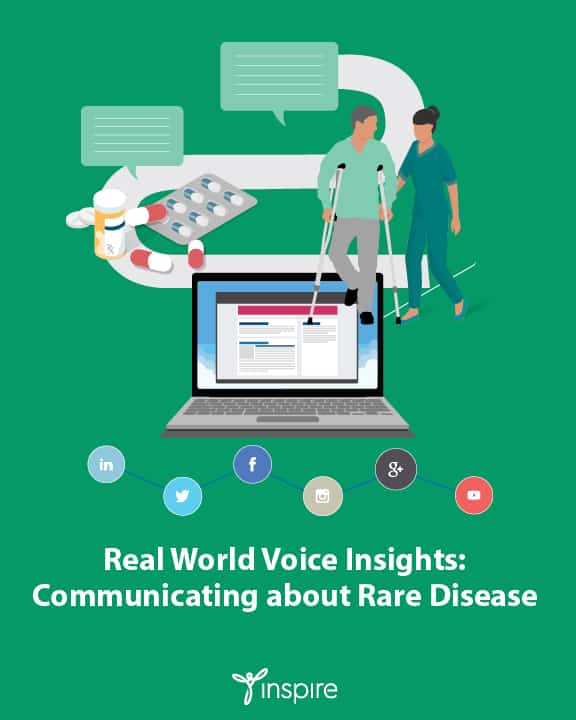Accelerating Rare Disease Research

COVID-19 has challenged the non-profit arena’s fundraising arm, which is largely based on face-to-face events like galas, runs and walk-a-thons. This limit on the number and amount of donations has occurred just as rare disease patient organizations have reached a tipping point in their influence on government and industry.
According to Malcolm Gladwell, the “tipping point” is “the moment of critical mass, the threshold, the boiling point,” where “ideas…spread like viruses do.” 1In this case, the tipping point refers to the efforts made by rare disease patient organizations to provide financial backing to biotechs and other organizations supporting the “orphan” or “rare” diseases that impact 20-25 million people in the US alone.
Rare disease organizations are following the example of one of the oldest and most successful rare disease organizations: The Cystic Fibrosis Foundation (CFF). From the beginning, parents and families have led the effort; establishing a care center network in 1961, followed by a patient registry in 1966. Active fund-raising for basic academic medical research led to the discovery of the cystic fibrosis (CF) gene in 1989. Unfortunately, progress toward creating treatments kept stalling out.2
One reason for this interruption is what is referred to as the pharmaceutical “valley of death.” The “valley of death” is the gulf between nascent areas of research — early development stages where promising molecules have been found — and later trial phases. Pharmaceutical companies acquire only some of the novel molecules from biotechs. Often those promising molecules would only benefit small populations of patients. Without the funding, many potential areas of research perish.3
But, when progress stalled in creating treatments for CF, the CFF tried a new approach, now called venture philanthropy. Their new tack was to partner with pharmaceutical companies to develop medications for cystic fibrosis.2 CFF has been able to subsidize a therapy from discovery to market.
Taking their direction from the CFF, many rare disease organizations have initiated strategies to help development and to bridge the gap. As Kari Rosbeck, President and CEO of the Tuberous Sclerosis Alliance (TS Alliance) explained, “In 2007, I spent a lot of time talking to other nonprofits who we wanted to emulate…We couldn’t do what they did, but we began to develop a plan, a way that worked for our organization, our community, our researchers,” including harnessing the power of information sharing on the Internet. 4
In 2010, TS Alliance partnered with Inspire to provide a dedicated support online community for patients with TSC and their caregivers. This resulted in more than advocacy; it uncovered previously unknown conditions tied with TSC, such as TSC-associated neuropsychiatric disorders (TAND). TAND was identified, named and a checklist of behaviors that indicate TAND was developed. “We’re taking it to the next step and developing consensus guidelines for treatment based on the checklist,” Rosbeck said. 4
In 2011, the TS Alliance started a pre-clinical consortium to encourage small or large biotechs to try their novel compounds in TSC. “We have licensed mouse models in epilepsy and tumor growth that best characterize and most mimic the human condition and can provide a positive signal that’s rigorous and reproducible,” Rosbeck said. By supplying these mice, the TS Alliance reduced a barrier to research on TSC. “They can use the mice, we have the licenses so that they don’t have to go through that lengthy negotiation process. They can run their screens confidentially [within the consortium] so that they don’t have to set up their own research labs,” she added.4 These efforts have moved treatment progress forward for TSC.
In keeping with these efforts by rare disease advocacy organizations to move medical research forward, Brian Loew, CEO of Inspire, is announcing at the World Orphan Drug Congress USA Conference being held virtually this week 24-27 a new initiative: Inspire Research Accelerator.
Inspire Research Accelerator is a program to enable all researchers from any organization around the world to collaborate with Inspire. There will be no cost for researchers from academic settings where the intended use of the research is to share findings openly and widely, and not for commercial purposes. Through this initiative, Inspire hopes to:
- Unlock research gaps using an existing library of longitudinal, endemic-specific instruments, especially for personalized medicine and rare diseases
- Identify and engage with cancer and rare disease patient populations based on specific clinical trials experience and interest
- Rapidly deploy and review validated Patient-Reported Outcome (PRO) measurement tools
- Further the exploration of complex disease underpinnings. This is done through correlations of structured and unstructured data and phenotypes reported by patients with other data types such as genomics/multi-omics and other biological data.
Although COVID-19 has been detrimental to fundraising for rare patient advocacy groups, the momentum and energy is not lost. Millions of patients and caregivers congregate on social media every day. Patient and disease advocacy is passing the tipping point from being just a hopeful influence into a powerful force for change – and there certainly is no going back.
Inspire offers a trusted community to patients and caregivers. Our goal with this blog, this website and our content is to provide the life science industry access to the true, authentic patient voice. In so doing, we support faithful operationalization of patient-centricity. Take a look at our case studies, eBooks and news outlet coverage.
References:
1Gladwell, M. The tipping point: How little things can make a big difference. Boston: Little Brown and company; 2000.
2Our History, The Cystic Fibrosis Foundation. The Cystic Fibrosis Foundation; c2019 [cited 2019 October 4]. Available from: https://www.cff.org/About-Us/About-the-Cystic-Fibrosis-Foundation/Our-History/
3Hoffman, K. Rare patient advocacy groups reach tipping point of influence. Applied Clinical Trials. 2020. https://www.appliedclinicaltrialsonline.com/view/rare-patient-advocacy-groups-reach-tipping-point-influence
4 Hoffman, K. (Inspire, Newton MA). Phone Conversation with Kari Rosbeck (CEO and President of the Tuberous Sclerosis Alliance, Washington, DC). January 15, 2019.






